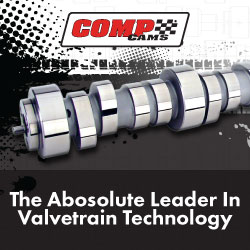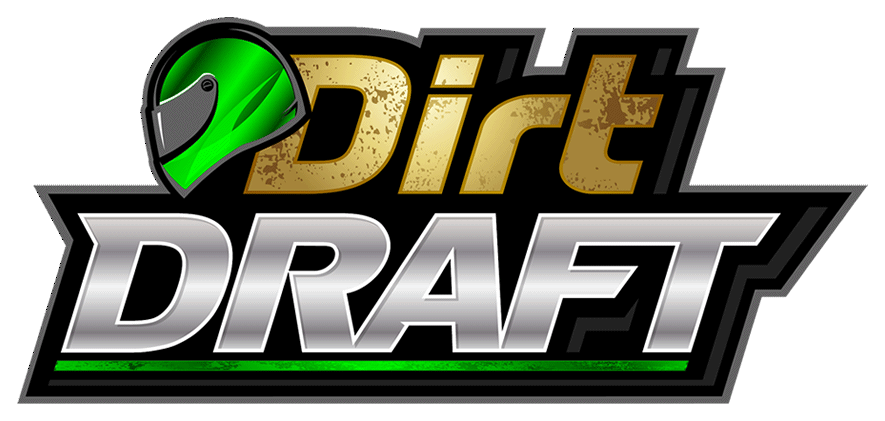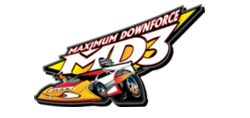
DirtonDirt.com exclusive
Cockpit mods provide racers creature comforts
By Todd Turner
DirtonDirt.com managing editorCompared to our ultracomfortable passenger cars with virtually every modern convenience at your fingertips, the cockpit of a Dirt Late Model is rather sparse.
No cupholders, no turn signal levers, no GPS, no radio knobs, no climate controls, no seat warmer button and (to the detriment of speedy racers) no horn. Most Late Model drivers have access only to barebones switches, the simplest of gauges, a brake-bias crank and safety harnesses instead a simple belt. | Slideshow
But that doesn't stop some dirt racers from adding some custom-made amenities and creature comforts that makes life a bit easier behind the wheel. After all, the more comfortable you are in the car, the better you'll perform.
Longtime Mount Holly, N.C., driver Chris Ferguson, who founded Victory Seats last year, knows that when drivers feel at home in the race car they're at their best.
"That's where all your decisions are made on the racetrack," Ferguson said, "so you got to be comfortable, and if you're not comfortable, you're definitely not gonna feel the car right.”
We found a handful of Dirt Late Model racers and teams that came up with creative ways to make the experience behind the wheel just a little better with mods and additions. It's not exactly automatically adjusted lumbar support, a backup camera or dock for a cellphone, but the tweaks give the competitors a degree of comfort that they feel improves their performance.
Superb support
Dirt track racing often means a jarring ride in the seat, but Mason Zeigler of Chalk Hill, Pa., wants to make sure he's not bounced around so much that he's not fully engaged with depressing the accelerator and brake. That's why he's added some key custom supports for his legs that his feet as steady as possible.
"I just try to do everything I can to take any element out that would make me either not smooth or fatigued," Zeigler said. "I just I try to make it where I just work my ankle and that's all I have to focus on."
Zeigler's modifications start with a specially requested seat from the Joie of Seating that leaves him sitting at a deeper angle and providing support further down his thighs.
"Most seats end halfway down your thigh where I have (seat builder) Randy (LaJoie) extended my seat all the way down to probably 4 inches from behind my knee," Zeigler said. "So the only thing I'm working when I'm racing is my ankle, so I don't have to worry about bouncing through holes and, and my whole leg bouncing up and down and making the throttle do things I don't want it to."
Zeigler also fashioned cushioned supports on the right side of the cockpit along with a custom mount hidden under the dash that he can pull down to brace his left leg.
"My crew guys laugh and call it the nut protector," Zeigler said of the left-leg brace. "Everywhere my legs sit, I have a leg brace. So my whole right-side leg, all the way down to the pedal, is almost braced with a cushion. And then my left-side leg, I have a mount where I can twist it off the dash (and) that'll come down and just rest for my left-side leg. (At racetracks) where you have a lot of speed and a lot of inertia, where your leg is constantly trying to hold it up, I feel just something you don't have to think about anymore. Just sort of let it rest against that pad and it just takes one thing out of your mind."
Zeigler said such support is necessary with the G-forces drivers endure circling tracks, sometimes at speeds over 100 mph when "inertia is pulling you to the right and shoving you to the right side of the cockpit.
"Imagine as a kid you're in on (playground merry-go-round) that spins round and round and round, your whole body is leaning one way. It's similar to that the feeling you experience. So it just gives you something to lean your leg against."
He likes that his left-leg brace can be easily moved out of the way compared to the way some other braces are fashioned.
"Mine's just a little different. I like to be able to (move it) when I get out of the car and make it completely up out of the way, so if you're ever in a situation you need to get out, and it just pivots right to the dash and disappears completely," he said. "If I get out, I just grab it and pick up on it and it collapses up to underneath the dash. Once it's along the steering column, it's completely out of my way."
Fully hydrated
Drivers can head to the pitside for a concession stand for a Coke between races, but Jonathan Davenport of Blairsville, Ga., has a setup so that he can get a drink of water even when he's behind the wheel.
After initially setting up a manual system with a water bottle, he now uses a system designed by Fluid Logic that allows him to utilize a tiny water line connected to a water bottle that runs through the center of the air hose that attaches to the rear of his helmet.
"It's something you would never think that you would need until you had it," Davenport said. "I don't know that I could race without it now."
Davenport can push a button on the upper right side of his cockpit to trigger a small water pump that gives him H2O on demand. An orange rubber fitting in his helmet is positioned near his mouth.
"There's a line ran through my, the air (hose fitting) on my helmet, it goes through the helmet and then this is sealed. It's got a rubber seal on the other side of my helmet. And then I just got a little button over there that I can push when I want water," Davenport said. "That just sits right on my lips and anytime I want to drink I just push that button."
A little hydration comes in handy on a hot night or long race.
"It's usually under caution or under a long green-flag run, especially in the summertime," Davenport said. "I first started doing it with a water bottle, like on a bicycle, and I would take a long tube and I'd just have it pointed up at my mouth and under caution I'd take a drink out of it. That was a manual version of it.
"I seen this (Fluid Logic) deal and got hooked up with these people and they've been great to work with. It's awesome. It really helps in the summertime. ... In July and it's 120 degrees, it feels like, if you're out running any time, a little drink of water goes a long way. So it's the same thing. We're in there working and little drink of water helps."
Softer seat
Not all the tweaks to the cockpit are fancy. Ashton Winger of Hampton, Ga., knows there are plenty of pads and seat cushions you can purchase for the driver's seat, but he's more comfortable with something simpler: a mud plug.
The round, styrofoam mud plugs are made to insert into a Dirt Late Model wheel to prevent mud buildup, but Winger modifies them to use as the simplest of seat cushions.
"Everybody laughs at me for it," Winger admits, "but I race, no matter what, I race on a mud plug so my ass don't get stiff. Which they make seat cushions, but for me, that's just what I've always raced with. Actually it's in (the seat) right now if you don't believe me.”
The 25-year-old has been doing it since he started racing at 14 "because my ass gets stiff at the end of all races," he said.
"I’ve got four or five of them that are all cut different," Winger added, "because sometimes when I drive somebody else's car. I’ll bring like all five of ‘em.”
Tightening the belts
There's not much extra room on either side of a driver in a Dirt Late Model cockpit, so it's not always easy for driver to reach immediately to their sides.
Jason Feger of Bloomington, Ill., found it difficult to reach to his left to adjust his seat-belt system, so he and crew chief Jason Palubicki came up with a solution a few years ago. They added a 12-inch extension toward the floorboard to modify where the belts can be tightened.
“We just bought an extension, it's a quarter-inch drive ratchet that Hooker supplies, and we just add an extension to it to get it out here where he can reach it," Palubicki said “The belts can come a little loose, so we added an extension to his seat-belt ratchet so it's easier for him to reach during the race or even before the race when he's getting in there and getting ready (so) he doesn't have to cram his hand down in there and try to get to the ratchet” that’s snug between the seat and driver's side doorpanel.
The ratchet-style adjuster allows Feger to easily tighten or loosen the belts, typically during a caution period.
“He probably wouldn't do that at speed, but maybe under caution or something, he would probably reach down and tighten it up if it needs a click or two," Palubicki said. “It’s something, just more of a creature comfort, something for him to reach" more easily.
Brake-bias alternative
Something you'll find sticking out of the dashboard of Dirt Late Models is a simple crank for a brake-bias adjuster, which allows drivers to have their brakes grabbing more from the front wheels or the rear wheels. The crank is usually listed with arrows for "front" and rear" directions but little other information.
Benji Hicks of Mount Airy, N.C., who builds Double Nickel Race Cars, prefers an adjuster that includes a visual reference point so you can see how close to the front or rear you are. Hicks finds the numerical information more helpful than having to turn the crank one way or the other to find the baseline.
“Most people have to count rounds in their head or if they want to change during the race next time they go out, they have to wind it all the way to one side or the other," Hicks said. "With the brake-bias adjuster that Allstar Performance makes — I get it from Behrent’s Performance Warehouse — and it gives you a quick idea of where you're at. You can look down at the gauge and it gives you an idea of where you're at without having to go all the way one way or the other to get set back to where you want it to begin the night with.”
The way Hicks has his master cylinder set along with his brake pressure, he knows it's about seven cranks from zero to complete front or rear braking. He finds the reference point much more useful than being blind to where the brake bias might be.
“Without the gauge, you have to screw it all the way one way or the other and then count your rounds back," he said. "With this, you just look over and say, ‘OK, I'm two rounds off the rear, so I don’t have to mess with it, or I have four rounds off the rear already. It's something to take a lot of guessing out of it and trying to eliminate as much guessing as we can.”

















































